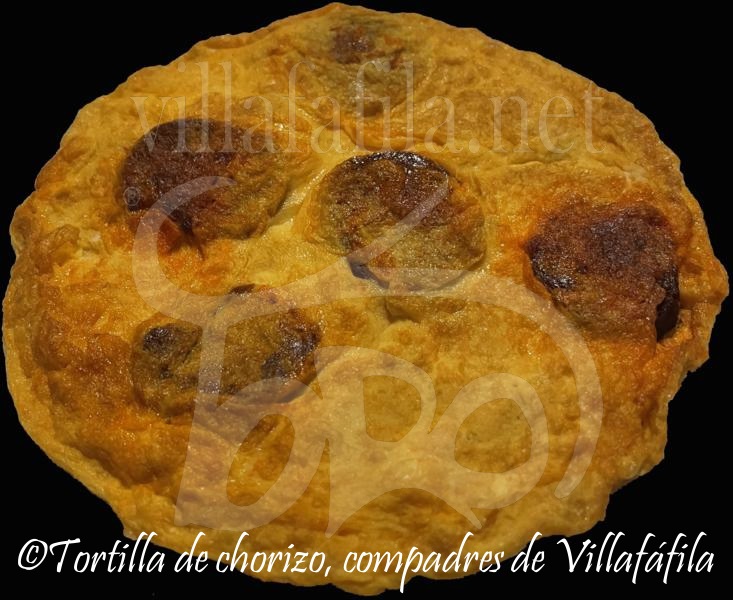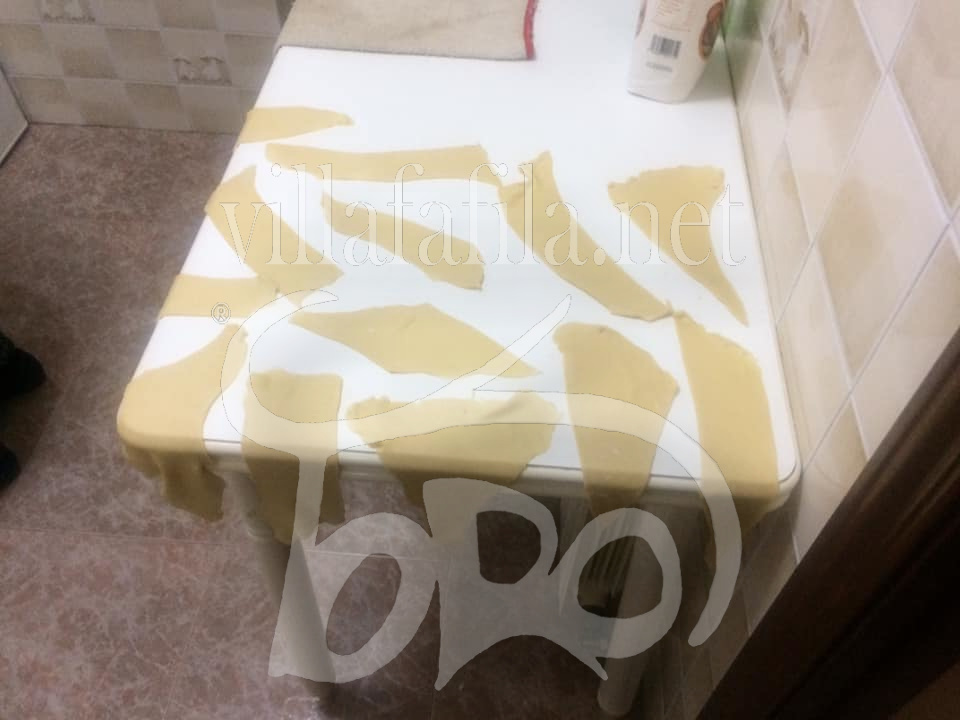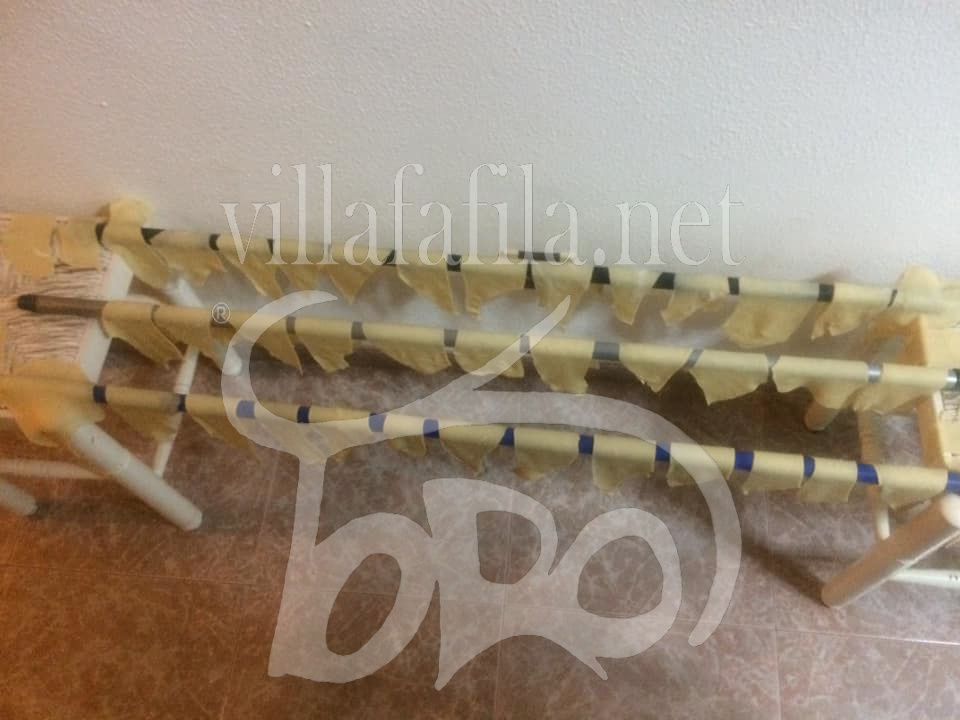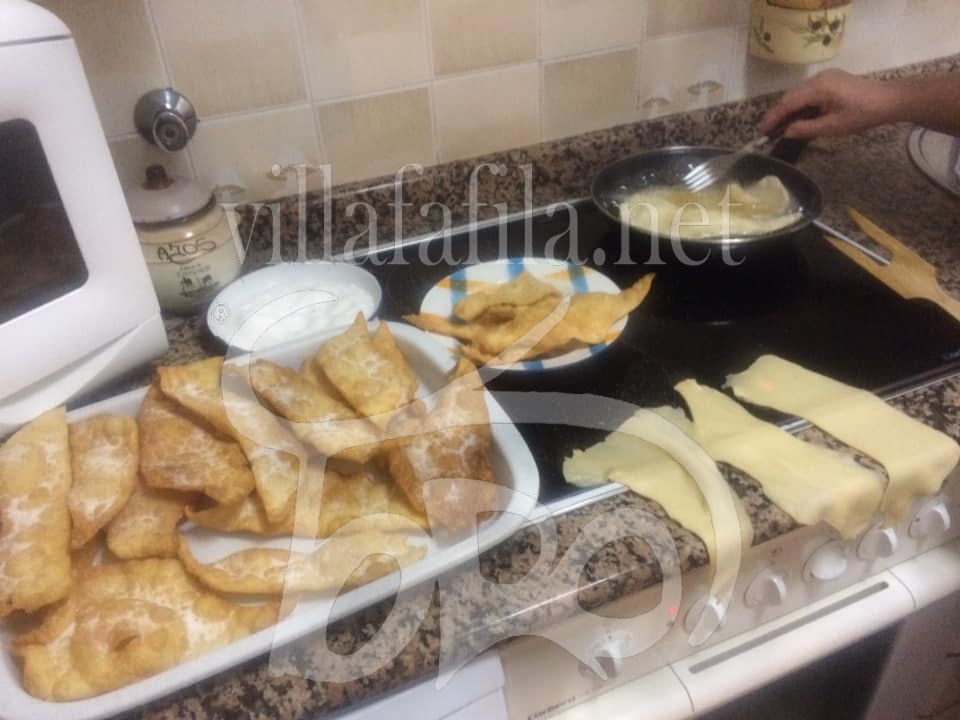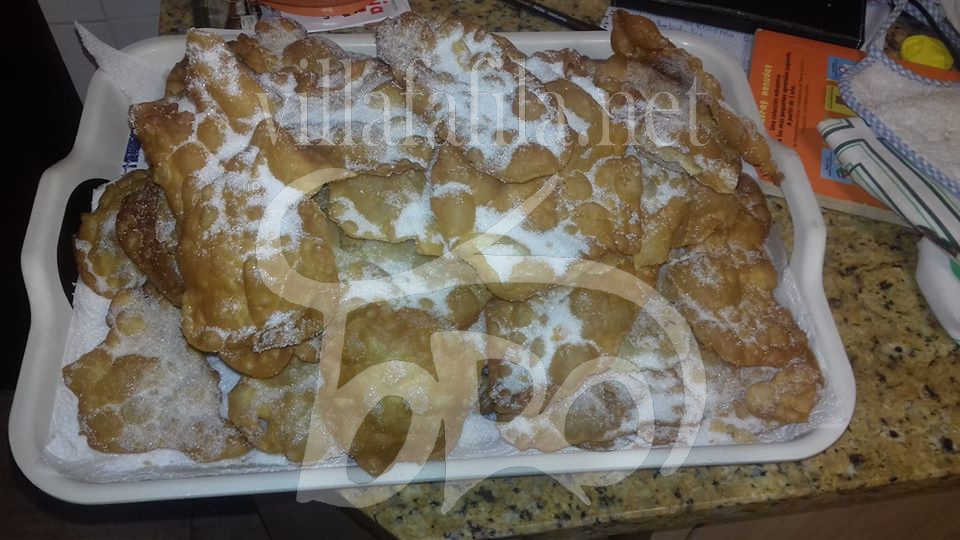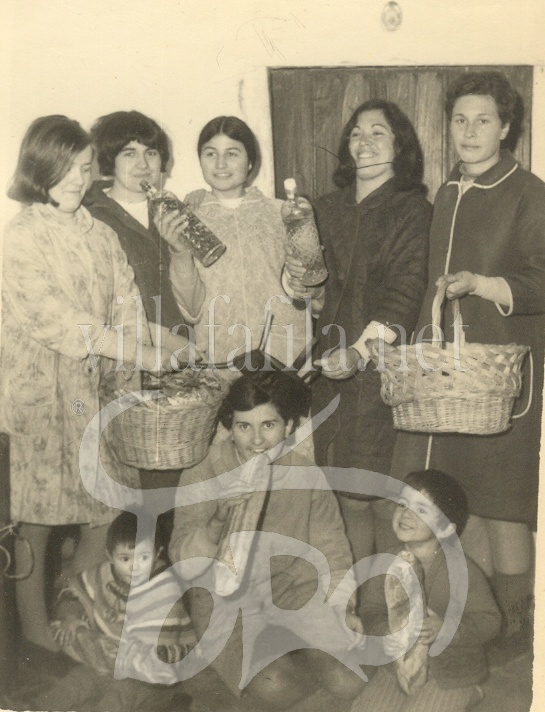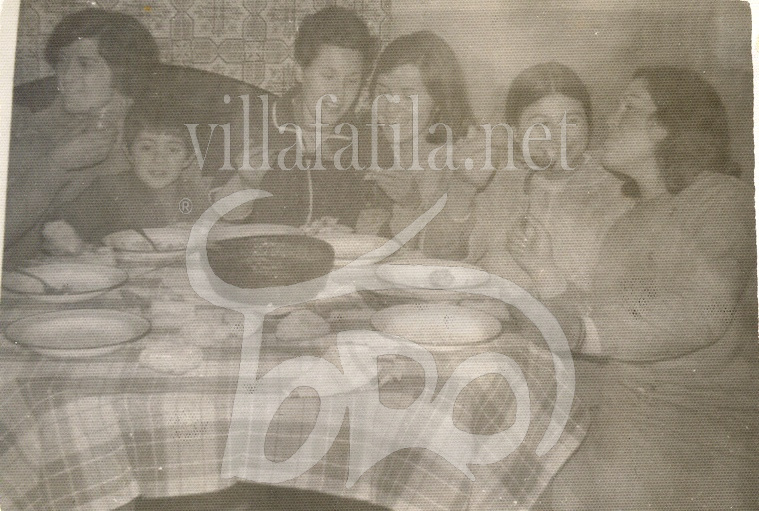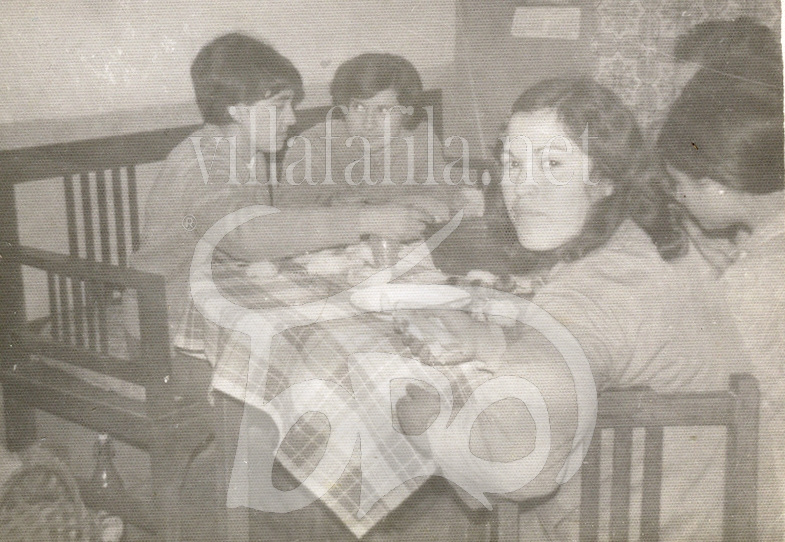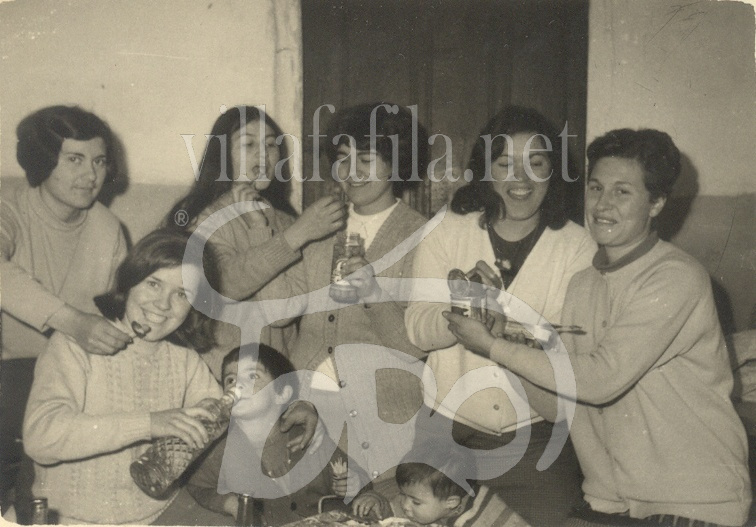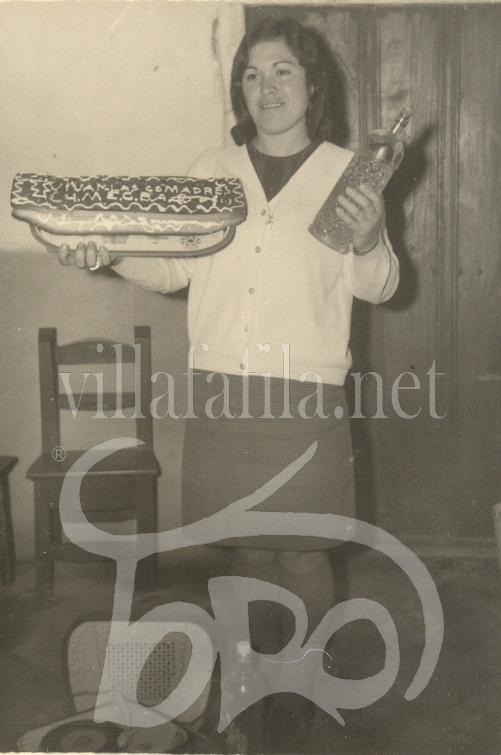COMPADRES AND COMADRES OF VILLAFÁFILA

ORIGIN OF THE COMPADRES AND CELEBRATION DATE
As everyone knows, carnivals, like Holy Week, do not have a fixed date on the calendar. Its celebration is directly related to the evolution of the moon, so each year they are celebrated on a different date. It should be noted that they do not always take place on the same dates in all Western countries.
In Spain, these festivities begin to be announced, depending on the area, with Thursday of compadres, which is the Thursday before Thursday of comadres, the two Thursdays before Carnival Sunday.
Tradition says that on Thursday of compadres people went out to the field to taste the sausages from the slaughter and took advantage of it to create courtships. Folded papers with the names of the single women of the town were put in a pot and the single men had to take one out and pair up with the single woman whose name was written on the paper. The following Thursday, Thursday of comadres, was done in reverse. The girls were in charge of taking out the piece of paper.
In some cases, the couples became boyfriends and those who did not succeed remained compadres (them) and comadres (them) for the rest of the year.
In other areas, on Comadres Thursday, women gathered to make sweets for the holidays, each one carrying the ingredients she could [1]
Jueves de Compadres has its correspondence with Jueves Lardero, which is celebrated in many places in Spain and Europe.
Lardero comes from the word “lardo” , which means bacon. This word comes from the Latin lardum or lardium , a word with which the Romans called bacon and lard. Over time it has become synonymous with pork.
In many of the towns that are celebrated, the tradition is to go out to the countryside to eat or have a snack, the traditional thing being to eat meat before the arrival of the carnival.
The tradition is widespread in some European countries.
In Italy there are two days of “carnevale” , in February, which are called “marte dì grasso” and “giovedì grasso” .
In France they are called the "mardi gra" , but the "jeudi gras" is also a party , this second day they say comes from a party in Poland.
In England there is “le jeudi gras” (in French) and they say it is French.
It is possible that this tradition dates back to the 16th century in Spain, with the expulsion of the Jews.
In almost all the places where it is celebrated, the festival is associated with the consumption of pork.
In places where Christians forced Arabs and Jews to convert to Christianity, eating pork was a sign of being an “old Christian” [2] .
As we have mentioned before, it has a Christian relationship, it is the prelude to the season of Lent, where eating meat on Fridays was prohibited, which is celebrated over several centuries to the present day and which has varied in each area,
As we have already seen, it falls according to the date of Holy Week. These vary considerably from one year to the next. The date is chosen from a formula established by the Roman Emperor Constantine the Great and the Council of Nicaea in 325 AD. c.
First, you need to find the vernal equinox, or first day of spring (around March 21-22), in a calendar that includes basic astronomical data. Then look for the next full moon, usually indicated in the corner of the calendar. Holy Week will fall on the following Sunday.
According to this rule, the latest possible date for Easter would be April 25. The earliest on March 22. Most of the time, Holy Week falls during the first week of April.
From this date of Holy Week, forty days before is Ash Wednesday and on Monday Carnival Tuesday, for which, the Compadres are two Thursdays before Ash Wednesday and one of the comadres.
In Villafáfila, this celebration is deeply rooted in its population, from children and very deeply transmitted, as well as being the only town in Tierra de Campos - Pan and other neighboring regions of Zamora that do not celebrate them, giving an almost exclusive air to the Villa. .
As we have described, it is equally certain that it comes from the consumption of pork meat and that it has been so linked for centuries in the Villa that the celebration of the Matanza del Cerdo [1] has always been typical , and with a Holy Week that is celebrated between processions from the XV century.
As soon as Christmas is over, the first thing you look at on the calendar is to take stock of when it happens, here, the Compadres are celebrated first by the boys (two Thursdays before Ash Wednesday ) and the Comadres are the girls (one Thursday before of Ash Wednesday).
We cannot locate at what moment it began to be celebrated in Villafáfila, our older generations, their grandfathers and grandmothers and even some great-grandmother or great-grandfather, spoke and transmitted their celebration of the beginning of the 19th century, we imagine that many events of time come from .
TYPICAL FOOD OF COMPADRES AND COMADRES - CHORIZO TORTILLA
As already said that the food is based on pork, in Villafáfila both in Compadres and Comadres, the dish that is never missing from the table is the “CHORIZO TORTILLA” , some good homemade eggs, with the chorizo being spicy in general of the traditional slaughter of the recent and well cured pig they delight the diners. If you don't eat the chorizo tortilla that day, it's like missing the tradition, and not completing it. Among the residents of the Villa, as soon as you talk about Compadres or Comadres quickly about food, the one that comes out to the sayings in relation to the chorizo tortilla: "you have to bring the chorizo tortilla, you have already prepared the chorizo tortilla to eat" so everything in trend to this dish, that they have given it the property that day of main dish and significant of it.
|
Compadres chorizo omelette, based on homemade eggs, with the chorizo from the traditional slaughter of recent and well-cured pigs |
TYPICAL SWEET OF COMPADRES AND COMADRES “THE EARS”
These days between Compadres and Comadres with the carnivals, two sweets are typical: Flowers and Ears, the latter are the ones that are totally made in the Villa,
We attach the composition of the recipe:
Ingredients [2] :
200 ml. of warm water.
50 grams of sugar.
100 grams of cooked cow lard or butter.
50ml of anise
1 egg.
500 grams Of flour.
|
ears recipe |
Depending on the area, they add one or other ingredients
In a bowl, put the warm water, cooked butter, with the salt, a glass of oil, a glass of white wine, and a glass of mixed juice. Add the egg and beat.
Add the flour and knead the whole mixture. We are incorporating the other half of the butter in pieces and continue kneading everything until the butter is completely integrated and we have an elastic dough.
We are taking portions of dough the size of a walnut, and with our hands smeared with oil, like the table and the roller, we are extending the dough with the roller, leaving it as thin as possible and giving it the shape of an ear.
|
Dough of the ears freshly kneaded and cut by Ms. Transito Miñambres Pedrero |
We will let it rest for about 1 hour.
|
Dough of the ears freshly kneaded and cut by Ms. Transito Miñambres Pedrero |
Fry them in a pan with plenty of oil over medium heat and turn them when we see that they have browned.
|
Mrs. Transito Miñambres Pedrero frying her ears |
|
Ears frying, fried and cooling by Dña . Transito Miñambres Pedrero |
We put them on a plate with absorbent paper so that they release all the excess oil and we already place them in the source in which we sprinkle them well with sugar.
|
Ears ready with their sugar to be tasted by Mrs. Transito Miñambres Pedrero |
So summarizing all this , in Villafáfila the Compadres are celebrated first for the boys (two Thursdays before Ash Wednesday) and the Comadres are for the girls (one Thursday before Ash Wednesday). The typical dish that cannot be missing is the chorizo omelette, like sweet Ears, if one of these two were missing, you would be left without the feeling of having made them as in the Villa de owes.
Compadres or Comadres on Thursdays are, at the table torillo de chorizo pon and with the Orejas a tasting.
FRIENDS
We could divide the experience of this event in the Villa into two stages: the stage of participation with more intensity is when one is of school age, since that day one does not go to class. Weeks before, the preparations begin, in which each boy or girl gets together with their friends. The stage used to be in some panera, old house, or in the warehouse. Today, many people already have places to celebrate parties and meals, popularly called (garito or boio). The place was always decorated, with photographs, men with women marking attributes. Little by little he was taking all the utensils that were needed, the table to eat, fire for the place, or a brazier, each one his chair and cutlery.
|
Children celebrating compadres with their ears in hand |
|
|
|
ears plate |
The main acts were the meals, that the different dishes were raffled among its members. For breakfast, since it is always the end of January or February, they are cold days, hot things like: a chocolate accompanied by churros. In the food: great variety, in many there was a paella, a main course, and dessert, such as a flan, the afternoon snack, some rice pudding or fried milk. Dinner consisted of the traditional: a chorizo tortilla, all accompanied with soft drinks. When you're already a youngster, you would hang around a bottle to take a few shots.
This day, the ears of the Villa have their typical sweet.
My childhood memories are that that day getting up early didn't matter at all, I was looking forward to it, impatience didn't allow me to sleep lazily.
After breakfast, activities were carried out to spend the morning, one of them was to go through all the roofs of the town, with a stick to break the earpieces that hung on the roofs of the great frost of the night, even to suck them like a polo, go skating in a lagoon or stream, but not before testing the width, so as not to fall in, even so, some ended up getting completely wet, the soccer game was not lacking, they went at recess time, to play with the rest of the children from the school in the other towns to which they were invited to go and eat an ear, they brought ears to all the teachers of the school, some teacher could touch an ear with cotton wool to make a joke, all day long part of spending time in your own compadres, you visited the rest of the compadres. They invited us to eat from their ears, the joke arose when someone ate the one with the cotton; That's how the morning passed until lunchtime,
After eating, generally the boys and girls, from the rest of the towns who went to school, were allowed to go out to visit the Compadres and Comadres who were invited, of course they had some joke, from the cotton ear, not to let him come back to class, and something lads invited the boy or girl, and the law of life began to wake up, so it went until snack time.
Normally around the snack a family member, neighbor, who was smaller, spent that time there like some others, contributing part of the snack, of course the perrerías were not too many with them, law of life everyone went through them, there was time for games, cards or the game that was in force at that time, such as the spinning top, the nail, etc., one of the games was the bamba, which consisted of turning off the light and with any element in hand getting involved with bumps with each other , this could happen at any time, it was just being without light to say the word bamba!
|
Children of compadres spending the day together celebrating |
|
buddies food |
Dinner time came, then depending on age, they stayed until later at night, with the corresponding visits.
In the compadres when you were up to a certain age, always some mother, was on surveillance, but even so they did, that day some already had some liquor, a cigarette, or the most mischievous won a kiss.
As there was always food left over, on Friday they would go out to eat again, and after class all together again in the local, spending the whole weekend in the local, arriving on Sunday that each one took home what that he had contributed, ending the Compadres.
|
Children of compadres spending the day together celebrating |
COMADRES
Finished the compadres, and commented throughout the week, the comadres arrived, awaited with great enthusiasm since the beginning of the year.
As has been said before, girls' party!, which began weeks before their arrival, being as important for us that day as the previous ones that we dedicated to their preparation.
The compadres had already given us a little insight into how to celebrate them, especially with regard to invitations when you were already a little girl, since it depended on whether they had counted on you at their party.
A few girls would get together, who were generally the group of friends with whom you shared everything during the year, although there were always those who joined the group, either because they didn't have friends or because they had argued with them at that time.
|
Girls celebrating the comadres in the years between the mid-1960s and early 1970s, 20th century |
Weeks before we dedicated ourselves to the search for the premises, something of great importance, because without the premises there were no comadres. It was cleaned properly and decorated with chains and other flourishes that we used to make ourselves with strips of cardboard and colored paper and even with strips of newspaper that we glued with the typical paste made with flour and water. Posters of the fashionable singer (the most handsome and the best of course) were pasted on the walls, the things necessary to spend that day were taken to the house or local: chairs, tables, music devices (whoever had them for that time), braziers, which were cisco and that same day in the morning we lit to be warm... We prepared the list of meals,
A few days before, the purchase was made, almost everything in the town stores (except the prohibited things: tobacco, alcohol...) and the meals were distributed. Sometimes the place was a house and we could make the food ourselves (not everything, of course), such was the desire for independence that we wanted to have.
The meals consisted of different dishes, including the potato and chorizo omelette, the custard and rice pudding, and of course! The typical carnival ears and flowers, ah! And the fried milk so well prepared to spend the typical jokes. For the rest there could be chicken, macaroni, paella..., a varied number of dishes.
|
Girls at lunchtime for the comadres in the years between the mid-1960s and early 1970s, 20th century |
|
Girls at lunchtime for the comadres in the years between the mid-1960s and early 1970s, 20th century |
We started the day with a good breakfast based on chocolate with churros and different activities were carried out throughout the morning, one of them was visiting the children and teachers at school because that day of course there was class for them. They used to go during recess and bring them refreshments and ears, taking advantage of the moment to invite them to go through our comadres. We ate and looked forward to the afternoon, because it was when we visited each other and made games and confidences, and when you expected that boy you liked and whom you had invited to drop by with his friends.
|
Girls celebrating the comadres in the years between the mid-1960s and early 1970s, 20th century |
|
Wench the comadres with a cake that says “LONG LIVE THE COMADRES, CH. MECB A” , initials of their names, celebrating in the years between the mid-60s and early 70s of the 20th century |
|
|
The afternoon and evening, when you were a little older, were the best. It was used to do a little of what we were forbidden to do (relatively), such as smoking the typical menthol fortune cigarettes so famous at that time, dancing with the boy who used to make you tick….
Everything passed in harmony, although there was never a lack of friction between us or with another group of comadres. You were also afraid that the boys would break into your comadres and steal your food or drink, which was typical many years ago, but in general it was a great day that you wanted to never end. For one day you were independent!, in quotes.
Of course, since everything was left over, the next day one would meet again, the truth is that that week was quite an event that was later remembered for a long time, even the days you dedicated yourself to collecting everything to return the keys to the premises .
Now it's different, but no less rewarding for that. Only the smallest ones seem to emulate a bit the typical comadres from before. We, the older ones, limit ourselves to celebrating a dinner in a restaurant or a local, but that does not stop it from being an important day of celebration that we celebrate with enthusiasm. After dinner they dance and have drinks in the bars of the town, and also the next day the events that happened are discussed and they laugh again and remember what happened.
I hope they never disappear!!!
|
Video of the Villafáfila Comadres |
Author:
Jose Luis Dominguez Martinez.
Text:
Maria Jesus Enriquez Chimeno.
Jose Luis Dominguez Martinez.
Bibliography:
http://books.google.es/books?id=99l1Y61YVE8C&pg=RA1-PA59&lpg=RA1-PA59&dq=jueves+de+compadres+en+españa&source=bl&ots=rWXcNWiv1p&sig=TkMSe9hzi5HO_zOkcx4pslLNhoM&hl=es&ei=aDdnTa_sama&o_aIIS3hAf
result&ct=result&resnum=2&ved=0CCYQ6AEwATgK#v=onepage&q=jueves%20de%20compadres%20en%20espa%C3%B1a&f=false
http://elcastellano.elnortedecastilla.es/castellano/aula/jueves-de-compadres-y-jueves-de-comadres
https://www.cuevasdesanmarcos.es/5017/jueves-de-compadres-y-comadres
http://berta-postres.blogspot.com.es/2009/02/orejas-de-carnaval.html
Photography:
Carlos Alonso Miñambres -Transit Miñambres Pedrero.
Family: Fidalgo - Fernandez.
Jose Luis Dominguez Martinez.
Video:
Federation of Associations of Pan and North-Duero Fields
Spikes: https://www.youtube.com/watch?v=07kCeDqBVHM
Transcription and montage:
Jose Luis Dominguez Martinez.
All text, photographs, transcription and montage, the rights belong to their authors, any type of use is prohibited without authorization.
All text and photography has been authorized for storage, treatment, work, transcription and assembly to José Luis Domínguez Martínez, its dissemination on villafafila.net, and any other means that is authorized.
[ 1] José Luis Domínguez Martínez, villafafila.net https://villafafila.net/matanza/matanza.htm.
[2] http://berta-postres.blogspot.com.es/2009/02/orejas-de-carnaval.html
[ 3] http://elcastellano.elnortedecastilla.es/castellano/aula/jueves-de-compadres-y-jueves-de-comadres
